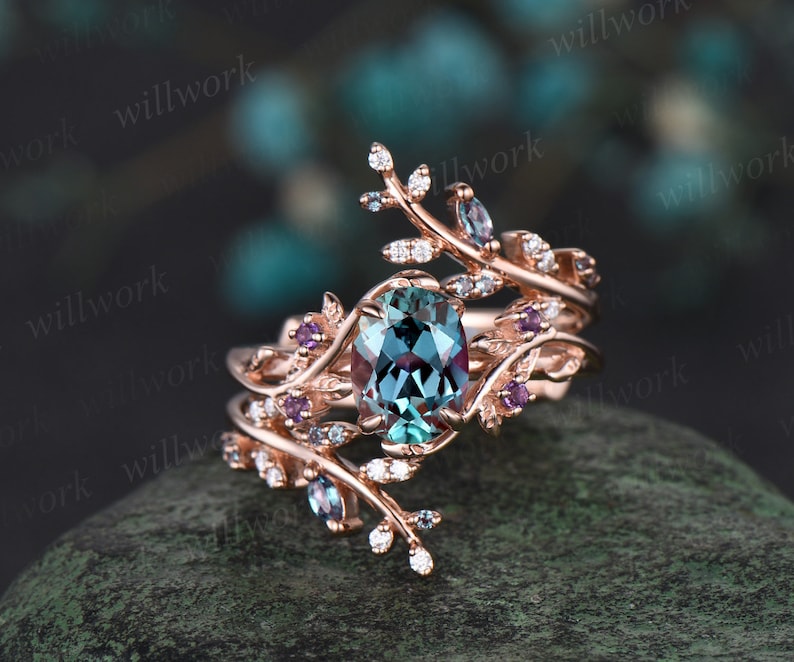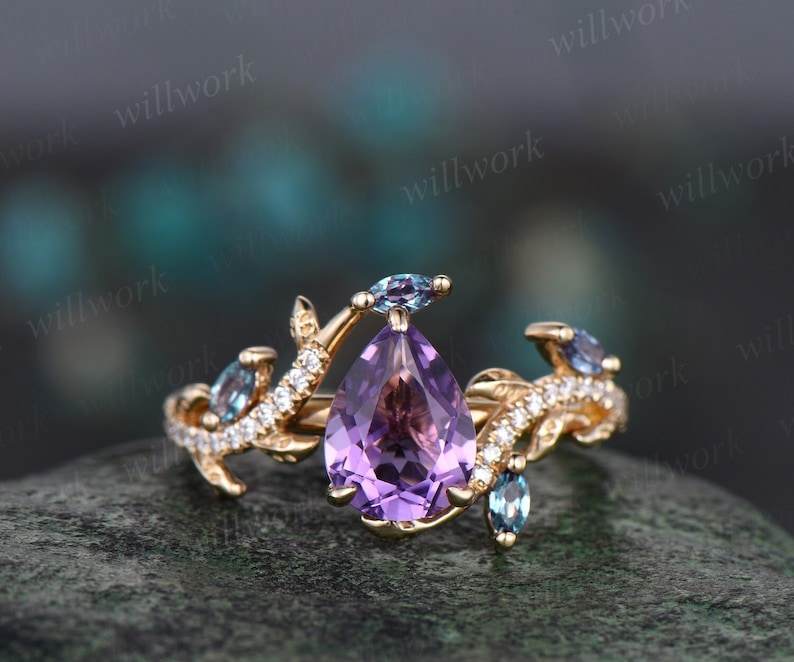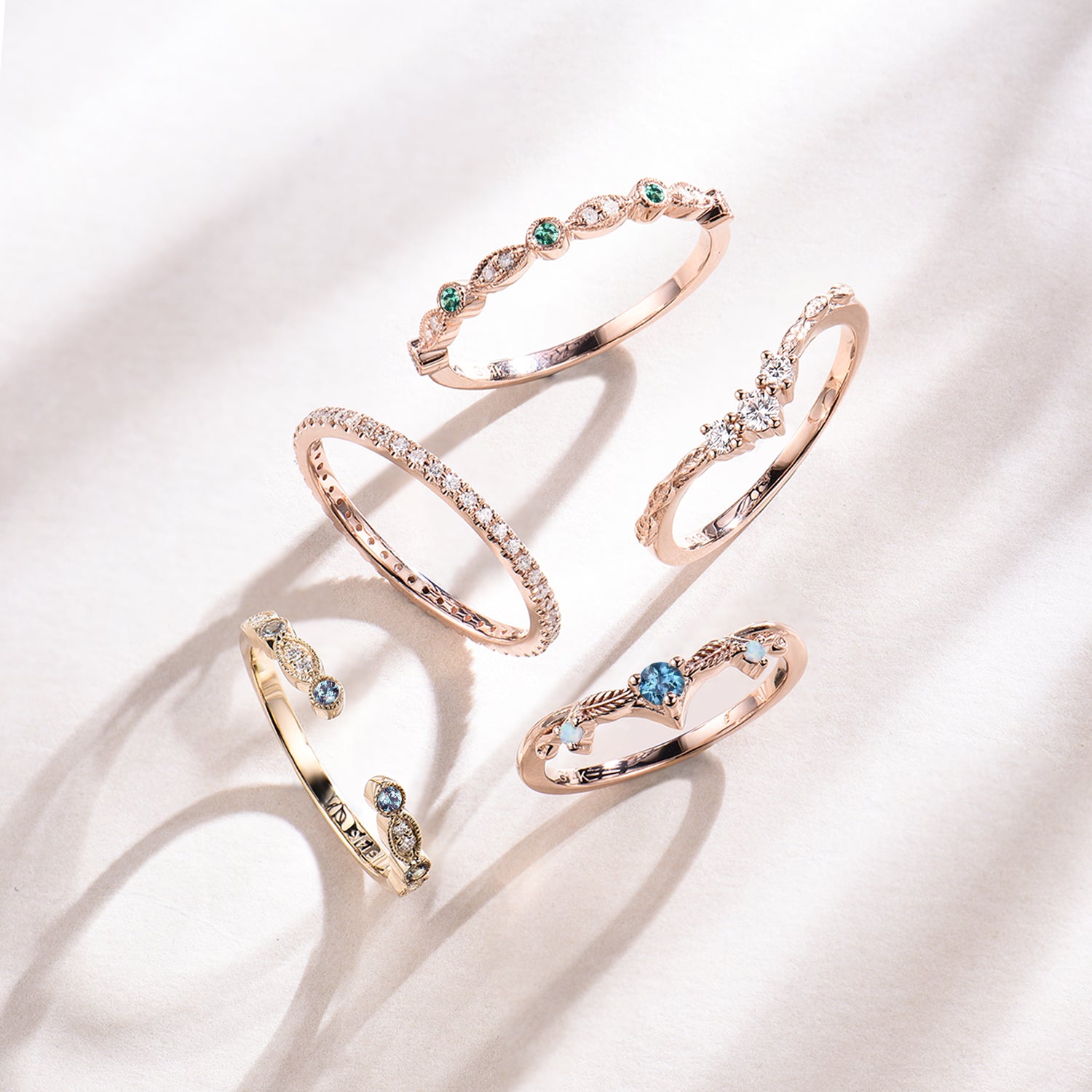Alexandrite vs. Amethyst: A Comparison of Two Elegant Gems
When comparing gemstones, remember that beauty is subjective. What one person enjoys, another may despise, particularly with colored gemstones, which vary greatly. The basic gem grades—color, clarity, cut, and carat weight—are universal. Alexandrite and amethyst both feature purple-red colors, but alexandrite is far rarer and more complicated, changing from green to red under varied lighting conditions. Amethyst, on the other hand, is the rarest quartz but lacks color-changing properties. Despite their differences, they have certain parallels. Understanding what distinguishes them in the world of warm-toned gemstones will allow you to make an informed decision. Let's look at the fundamental differences to help you choose between alexandrite and amethyst.
| Property | Alexandrite | Amethyst |
|---|---|---|
| Color | Color changes from green in daylight to red in incandescent light | Violet to purple |
| Hardness (Mohs Scale) | 8.5 | 7 |
| Origin | Russia, Sri Lanka, Brazil, East Africa | Brazil, Uruguay, Zambia |
| Rarity | Very Rare | Common |
| Price | High, due to rarity and color change effect | Moderate to Low, depending on color and clarity |
| Symbolism | Represents balance, confidence, and change | Represents clarity of mind, spiritual growth, and protection |
How Was Alexandrite Discovered?
If you've heard about Mark Henry Jewelry, you've probably heard the story before. It never gets old, so let us refresh your memories. In the 1830s, renowned mineralogist Nils Gustaf Nordenskiöld led an expedition into the Ural Mountains of Russia.
By a stroke of luck, Nordenskiöld's crew comes across a piece of alexandrite during their quest, and ever since the gem has changed the world forever. The crew all felt they'd unearthed an exceptionally high-quality emerald. The Ural Mountains were known to have deposits of these stones.
However, when exposed to incandescent lights, the gemstone immediately turned into a stunning crimson tint, so it’s been a wonder what it might be. After careful research and examination, gemologists and mineralogists agreed that this was clearly the discovery of a brand new stone. They named it "Alexandrite" after Russia's ruler at the time.
How Was Amethyst Discovered?
How amethyst was first discovered isn’t that clear. Amethysts were popular among the Ancient Greeks and have been in use for tens of thousands of years. While their origin is unclear, they have undoubtedly earned their place in history.
Where Is Alexandrite Found?
The most valuable alexandrite is sourced from the original Russian supply, although it is only available as an antique from this region.
The closest you can come to the Russian alexandrite is the Brazilian alexandrite. This supply was discovered in the 1980s and immediately became the main source for most high-end jewelers.
Since then, alexandrite has been discovered and mined in Sri Lanka, Zimbabwe, and several African countries.
Where Is Amethyst Found?
Amethyst mining yields the most valuable gems in Siberia. The most deeply-hued purple stones are the Siberian amethysts. Siberian amethysts are indeed so well-loved that they have their own category of amethysts. They serve as a designation for any fine, deeply purple amethyst.
Currently, amethysts can be found in many countries such as Bolivia, Uruguay, South Korea, Brazil, Canada, etc. There are known mines across the US in Maine, North Carolina, Georgia, Michigan, Wisconsin, Minnesota, Texas, and Arizona.
This contrast alone makes it evident that amethysts are less common than alexandrites.
Composition
One variety of chrysoberyls is alexandrite. It consists of both of the elements chromium and beryllium. Due to how rare in nature it is to have two elements together in one rock, its structural composition is extremely unusual. Alexandrites are present in gneiss, mica schist, pegmatites, and dolomitic marble rock formations.
They have a specific gravity of 3.68 to 3.80 and a vitreous luster. They do exhibit fluorescent, UV-long, and UV-short luminescence. Alexandrites are also heat-sensitive.

Nature Inspired Leaf Alexandrite Amethyst Ring Rose Gold
On the other hand, amethysts are a quartz type, which means they belong to a completely different family of crystalline minerals. Amethyst is created by volcanic lava crystals, which is why one of the primary chemical makeup of the gem is silicon dioxide. Much like alexandrites, amethyst can be mostly found in alluvial deposits in pegmatites.

















